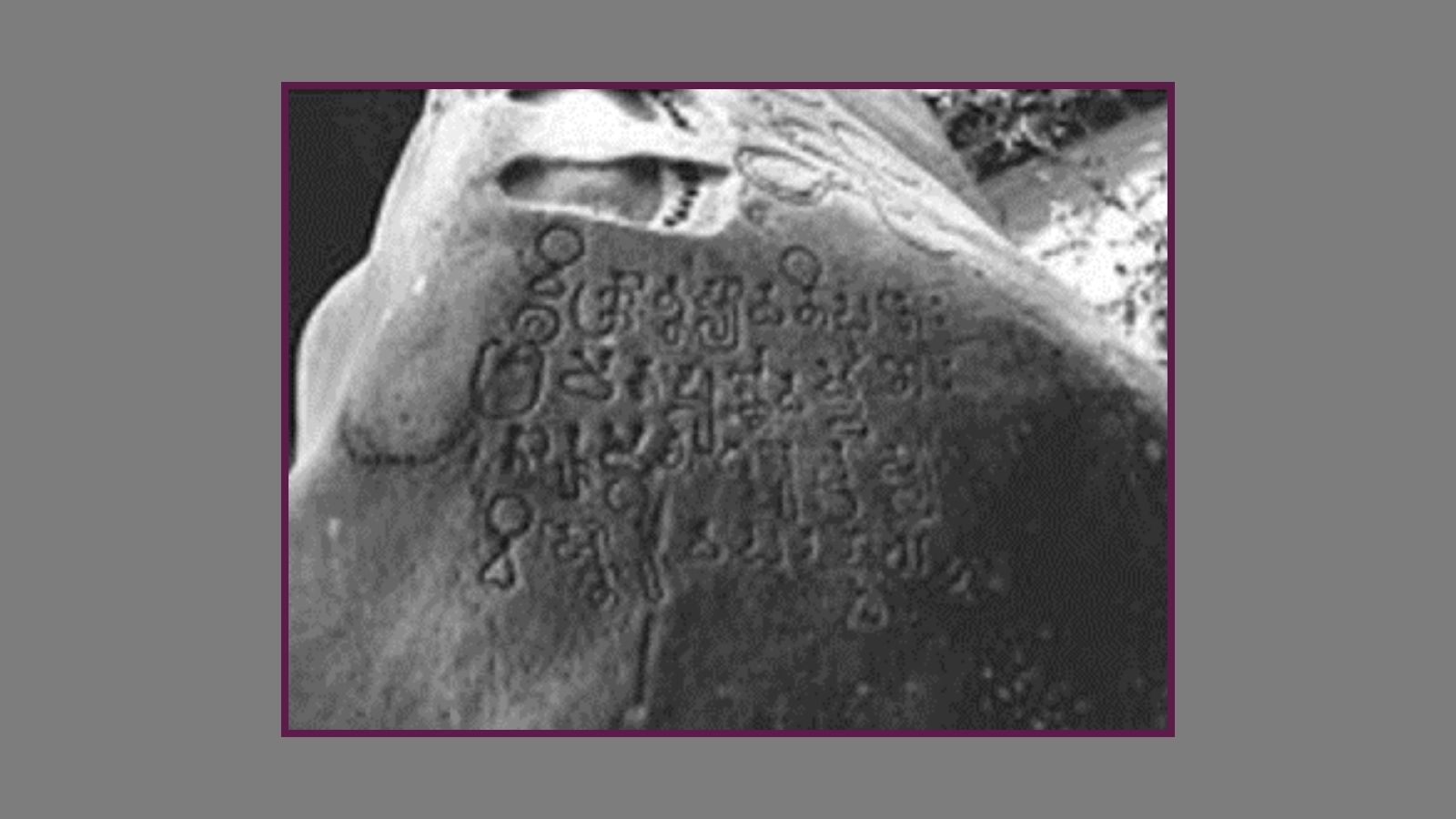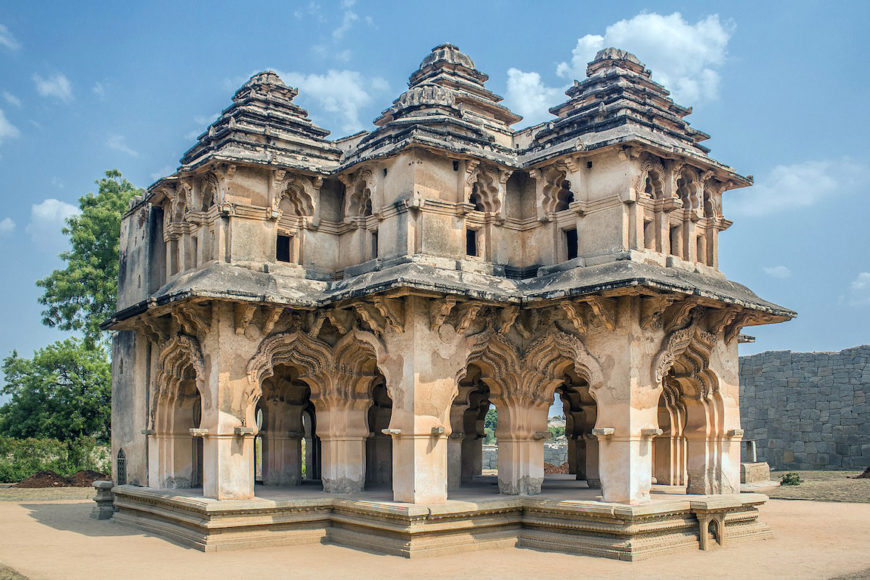Hindu civilization has had countless contributions that have impacted the world, presented here are merely the contributions necessary to understand its impressive scope beginning with the creation of the Pallava script and ending with the development of software in the Nepali language. It is important to note that this list is not exhaustive;
Advancement of Writing
In the Pallava Empire, the Pallava dynasty
created the Pallava script. This script consisted of a collection of letters that were the basis for the writing system used in the Pallava Empire. The Pallava script’s origins go back to Tamil-Brahmi and was used by students and priests to communicate. Moreover, this creation helped build a foundation for the languages of Tamil, Thai, Sundanese, and many others used in the modern era (“Pallava script”). Thus, the Pallava script’s impact was felt across the Asian continent, as many languages may have been drastically different without the creation of said script. However, this creation is not well known because of the complexity of discussing the history and impact of various scripts (“Why are old languages harder to learn”). In addition, the Pallava script is no longer used in the modern era, so the benefits of learning the script seem slim. Nevertheless, learning the Pallava script has the benefit of being able to read texts written in the Pallava script where translations may not exist. This ability gives accurate insight into the knowledge of citizens in the Pallava empire which is its own reward (“How to Learn a Dead Language”).

Advancement of Astronomy
In the Gupta Empire, in 520 CE, an astronomer named Aryabhata used the movement of the stars to prove that the Earth rotates. He published his conclusions 1513 years ago, in the text, Aryabhatiya, when knowledge about the solar system and stars was incomplete and often inaccurate (“Aryabhatiya”). His discovery helped expand the field of astronomy and was used by other astronomers to support their research, like Brahmagupta and Varahamihira (“Aryabhata”; “Indian astronomy”). Although significant, this discovery is not as widely known because astronomy is barely taught in primary and secondary schools, as it is not seen as useful in everyday life (“Why is astronomy hardly taught”). Nevertheless, the relevance of Aryabhata’s discovery can be seen in the popular act of stargazing or viewing the stars for entertainment. This discovery made it easier to stargaze by laying the foundation for a connection between time and the location of stars (“Orientation”). In a world without Aryabhata’s findings, stargazing would be much less popular, and many stars may not be properly identified, given the difficulty of finding them.
Advancement of Architecture

In the Vijayanagara Empire, skilled architects combined parts of Islamic and Hindu architecture to create luxurious buildings. These buildings were often used by the emperor and his family. For example, the Lotus Mahal had arches used in Islamic architecture and a roof with multiple layers used in Hindu architecture (Pai, “Art and architecture of Vijayanagara empire”). The resulting structure is a beautiful display of the feats that can be achieved by encouraging religious diversity instead of persecuting it. This form of architecture influenced temple design for centuries in India and likely helped influence modern temple design worldwide (“Vijayanagara architecture”). Furthermore, this style of architecture serves as a symbol of the benefits of religious tolerance as the Vijayanagara Empire practiced throughout its history (“Vijayanagara Empire”). This creative combination of distinct regions in the form of architecture would not be possible without religious tolerance. Nevertheless, these advancements are not widely known as more prominent influences of Hindu temple architecture exist, such as religious texts like Vedas (“Hindu temple”).
Advancement of Warfare
In the Maratha Empire, the Marathas helped develop the military strategy of guerilla warfare (“Maratha empire”). This form of warfare is unique because it is where individuals or small groups act independently and use methods of ambush and sabotage to fight against a military force (“Guerrilla warfare”). This type of warfare was used in several wars across history, including the Vietnam War and the Second World War. Thus, the Marathas’ effort to develop guerilla warfare helped change the outcomes of wars throughout history, as there were many successful military campaigns based on guerilla warfare (“History of guerrilla warfare”). This influence on the outcome of wars meant the Marathas helped influence whether certain countries would even exist. Likewise, this development is well-known in India because of the Maratha Empire’s use of guerilla warfare to defeat the Muslim Mughal Empire. In this war, the Mughal Empire was defeated even though it controlled a substantial part of India, representing a victory against the repression of Hinduism (“Maratha empire”).
Advancement of Technology
In Nepal, Sakya, a software developer, was the first to code software in Nepali. This advancement was achieved when most Nepalese did not use computers but relied on typewriters (Aryal, “A Very Short History”). This innovation allowed Nepalese worldwide to use software applications even if they did not know English, the language most programs operated in at the time. This software also led to the growth of mobile banking in Nepal as signing electronic checks became viable (“Muni Sakya”). Yet, this innovation is not widely known because the relatively small number of people who read Nepali and the relatively large number of people who can read English made the use of this translated software uncommon (Sakya, “Created Devanagari Computer”). However, the existence of translated software helps give Nepalese people the same experience given to English users. This improvement in quality encourages Nepalese people to participate in online discourse and content creation, leading to the sharing of culture and experiences (“Future of Software is Global”).
Works Cited
- “Art and Architecture of Vijayanagara Empire (Article).” Khan Academy, Khan Academy, www.khanacademy.org/humanities/art-asia/south-asia/x97ec695a:1500-1850-deccan-south/a/art-and-architecture-of-vijayanagara-empire. Accessed 1 Sept. 2023.
- “Aryabhata.” Wikipedia, Wikimedia Foundation, 13 Aug. 2023, en.wikipedia.org/wiki/Aryabhata.
- “Aryabhatiya.” Wikipedia, Wikimedia Foundation, 12 Aug. 2023, en.wikipedia.org/wiki/Aryabhatiya.
- Astronomy Photos, Download the Best Free Astronomy Stock … – Pexels, www.pexels.com/search/astronomy/. Accessed 1 Sept. 2023.
- Chew, Gordon. “Translating & Translators.” LinkedIn, www.linkedin.com/pulse/translating-translators-gordon-chew/. Accessed 1 Sept. 2023.
- Dalibor. “The Future of Software Is Global: How Software Translation Can Help.” Phrase, 17 July 2023, phrase.com/blog/posts/everything-you-need-to-know-about-software-translation/#:~:text=Software%20translation%20increases%20the%20usability,how%20to%20make%20it%20work.
- Datta, Saurav Ranjan. “India’s Pallava Dynasty Left Its Mark on Much of South-East Asia.” Ancient Origins Reconstructing the Story of Humanity’s Past, Ancient Origins, 20 Nov. 2020, www.ancient-origins.net/ancient-places-asia/pallava-dynasty-0014562.
- “Guerrilla Warfare.” Wikipedia, Wikimedia Foundation, 29 Aug. 2023, en.wikipedia.org/wiki/Guerrilla_warfare.
- “Gupta Dynasty.” Encyclopædia Britannica, Encyclopædia Britannica, inc., 17 Aug. 2023, www.britannica.com/topic/Gupta-dynasty.
- “Hindu Temple.” Wikipedia, Wikimedia Foundation, 30 Aug. 2023, en.wikipedia.org/wiki/Hindu_temple.
- “History of Guerrilla Warfare.” Wikipedia, Wikimedia Foundation, 16 June 2023, en.wikipedia.org/wiki/History_of_guerrilla_warfare.
- “History of Hinduism.” Wikipedia, Wikimedia Foundation, 24 Aug. 2023, en.wikipedia.org/wiki/History_of_Hinduism.
- “Indian Astronomy.” Wikipedia, Wikimedia Foundation, 30 Aug. 2023, en.wikipedia.org/wiki/Indian_astronomy.
- Kennedy, Shannon. “Dead Languages: How (and Why) to Learn a Dead Language.” Fluent in 3 Months, 27 May 2022, www.fluentin3months.com/dead-languages/?expand_article=1.
- Kevin. “Why Is Astronomy Hardly Taught in School?” World Leading Higher Education Information and Services, 9 Dec. 2020, world.edu/why-is-astronomy-hardly-taught-in-school/.
- “Maratha Empire.” Encyclopædia Britannica, Encyclopædia Britannica, inc., www.britannica.com/topic/Maratha-Empire. Accessed 1 Sept. 2023.
- “Marathas Defending Delhi: Gen Lake Tells East India Co Guv-Gen ‘We Defeated Scindia, Mughals Welcomed Us.’” Latest News by Times Now News, www.timesnownews.com/india/article/17-september-1803-general-lake-tells-east-india-co-governor-general-marathas-defeated-mughals-surrendered/813202. Accessed 1 Sept. 2023.
- Mina Aryal, et al. “Information Technology in Nepal: The Beginning.” ICT Frame, 16 Mar. 2019, ictframe.com/a-very-short-history-of-information-technology-in-nepal/.
- “Muni Sakya.” Wikipedia, Wikimedia Foundation, 26 July 2023, en.wikipedia.org/wiki/Muni_Sakya.
- Orientation, home.ifa.hawaii.edu/users/gruff/default/Astrolab/18 Orientation.htm#:~:text=This%20motion%20is%20due%20to,and%20setting%20in%20the%20West. Accessed 1 Sept. 2023.
- “Pallava Script.” Wikipedia, Wikimedia Foundation, 27 Aug. 2023, en.wikipedia.org/wiki/Pallava_script.
- Shakya, Munibahadur. “‘Created “Devanagari Computer” to Facilitate Communication in Nepali Language.’” Country Communication, 24 July 2018, deshsanchar.com/2018/07/22/78640/.
- “Vijayanagara Architecture.” Wikipedia, Wikimedia Foundation, 11 July 2023, en.wikipedia.org/wiki/Vijayanagara_architecture.
- “Vijayanagara Empire.” Wikipedia, Wikimedia Foundation, 26 Aug. 2023, en.wikipedia.org/wiki/Vijayanagara_Empire.
- “Why Are Old Languages Harder to Learn and Understand than Their Modern Counterparts Although Human Evolution Is Supposed to Be Overall Ra…” Quora, www.quora.com/Why-are-old-languages-harder-to-learn-and-understand-than-their-modern-counterparts-although-human-evolution-is-supposed-to-be-overall-raising-to-higher-levels-and-how-could-ancient-peoples-have-more-complex-and. Accessed 1 Sept. 2023.



![[ India Today ] Ohio senator JD Vance thanks wife, a Hindu, for helping him find Christian faith](https://hinduvishwa.org/wp-content/uploads/2024/06/us-senator-jd-vance-reveals-how-his-hindu-wife-usha-helped-him-find-his-christian-faith-image-re-272530504-16x9_0-120x86.webp)









